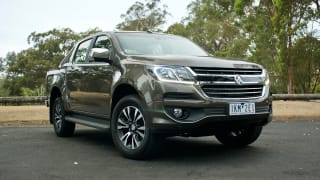We went straight to the top with the 4x4 dual cab GT, which is available with a six-speed manual ($52,490), or six-speed auto like our test vehicle ($54,090). Given the GT is the highest model grade available in the BT-50 range, its pricing looks good against rival premium 4x4 dual cab offerings like the more lavishly equipped Toyota Hilux SR5+ auto ($58,440) and Ford Ranger Wildtrak auto ($60,090).
The GT specification includes black leather-trim for the seats, steering wheel and gearshift handle, eight-way power adjustable driver’s seat, dual-zone air conditioning, multiple connectivity multimedia system with 8.0-inch colour touchscreen and digital (DAB) radio, 17-inch alloys with 265/65 R17 tyres and a full-size steel spare, rain-sensing wipers, chrome rear bumper, polished tubular side-steps, privacy glass and more. However, we reckon at least a tow bar and tonneau cover should be standard at this premium model grade.

Our test vehicle was also fitted with some Mazda genuine accessories including a black steel bull bar ($2538.63), driving lights ($825.93), wired 3.5 tonne tow-bar ($1017.67), dual battery kit ($1296.79), soft tonneau ($748.54) and embossed load floor mat ($426.84). They all look great and work well, but combined would add almost $6900 to the vehicle’s purchase price, pushing it above Ford's Wildtrak.
















